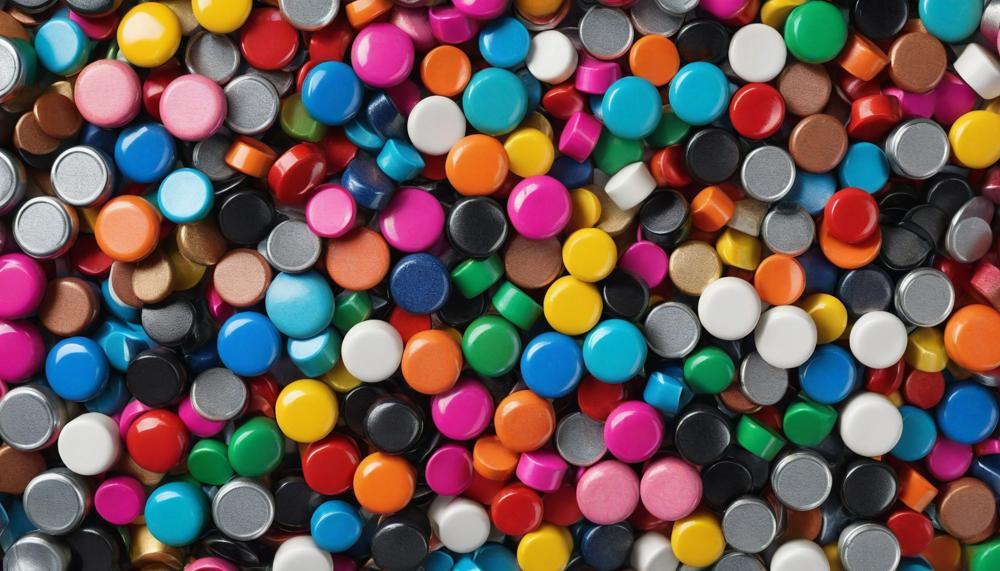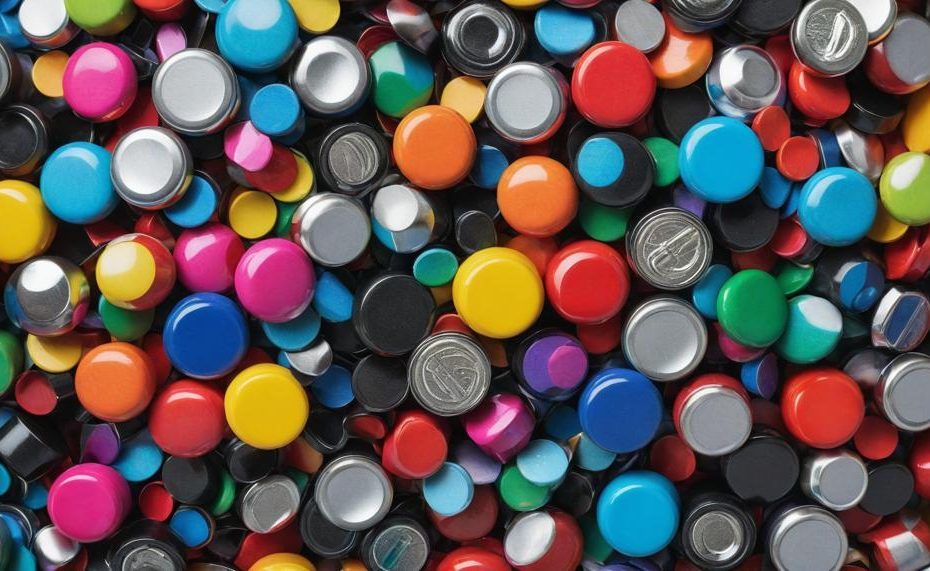Disposing of magnets might not be something you think about every day, but doing it right is crucial. Magnets, particularly neodymium magnets, shouldn’t just be tossed in the trash or left lying around due to their potential environmental impact and safety risks.
Proper disposal helps prevent harm to both the environment and anyone who might come into contact with them.
So, how do you go about disposing of magnets correctly? Whether it’s taking them to a scrapyard, finding creative ways to repurpose them, or following specific steps for neodymium magnets, there are several methods to ensure they’re disposed of safely.
Key Takeaways:
- Avoid the Trash: Magnets should not be thrown in regular trash due to potential environmental harm.
- Scrapyards: Take your magnets to a local scrapyard for safe disposal.
- Creative Reuse: Consider repurposing old magnets in crafts or other projects.
- Special Care for Neodymium Magnets: These require thermal demagnetization before disposal.
- Business Compliance: Companies must adhere to strict disposal rules to avoid penalties.
- Steel Container: Store neodymium magnets in a steel container before disposal to prevent accidents.
- Local Electronics Dealers: Many electronics and appliance stores can help with proper magnet disposal.
Understanding the importance of disposing of magnets properly is the first step in ensuring that we minimize their environmental footprint. Dive in to learn more about each method and why it’s necessary for both safety and sustainability.
Contents
Why Worry About Throwing Away Magnets?
Improper disposal of magnets poses several significant risks to both the environment and human safety. Below are the key consequences:
| Environmental Damage | Magnets, especially neodymium ones, contain rare earth metals. When discarded improperly, these metals can leach into the soil and water systems, contaminating natural habitats and posing a threat to wildlife. Additionally, magnets thrown into bodies of water can interfere with aquatic life and disrupt ecosystems. | Source |
| Harm to Wildlife | Small magnets can be ingested by animals, leading to internal injuries or death. Magnetic properties can cause severe blockages and perforations in the digestive tracts of wildlife. | Source |
| Human Safety Risks | Improperly disposed of magnets can attract metallic objects, causing accidents or injuries. For example, strong neodymium magnets can snap together unexpectedly, pinching or breaking fingers. | Source |
| Interference with Electronics | Magnets can damage electronic devices if they come into close contact. Disposing of them near electronics can lead to data loss or malfunctioning equipment. | Source |
| Regulatory Compliance | Businesses that fail to dispose of magnets, particularly neodymium ones, according to regulatory standards can face significant fines and legal consequences. Compliance with federal guidelines, including thermal demagnetization, is mandatory. | Source |
Responsible disposal methods include reusing, recycling, or utilizing specialized disposal services.
Disposing of Kitchen Magnets
When kitchen magnets outlive their usefulness, it’s crucial to dispose of them safely to protect the environment and avoid unnecessary landfill waste. Here are practical ways to handle kitchen magnet disposal:
Safe Disposal Methods:
- Reuse or Repurpose
- Craft Projects: Magnets can be repurposed for various DIY projects or used in educational activities.
- Donations: Schools, community centers, or hobby groups might welcome donations for creative uses.
- Scrap or Demagnetize
- Metal Scrappers: Contact local metal scrappers who might accept magnets, especially if they are large or made from rare materials like neodymium.
- Demagnetization: For powerful neodymium magnets, demagnetizing them before disposal can prevent accidents. This can be done by heating them or using a demagnetizing coil.
- Disposal with Trash
- Standard Disposal: Small, non-hazardous magnets can often be disposed of with household waste, but check local regulations first.
- Secure Packaging: Wrap them securely in a bag or box to avoid injuries to sanitation workers.
- Specialized Disposal Services
- Electronic Stores: Many electronics dealers or appliance stores have specific disposal methods for items with magnets.
- Hazardous Waste Facilities: Some local waste facilities accept hazardous materials, including large or strong magnets.

For further information on safe disposal practices, check out this comprehensive guide on recycling and disposal of magnets.
Larger Magnet Disposal
Larger magnets should be disposed of with caution to avoid potential hazards. Here’s a comprehensive guide to ensure safe disposal:
- Demagnetizing Neodymium Magnets:
- Before disposing of neodymium magnets, it is advisable to demagnetize them. This reduces their ability to attract metal objects, which can be hazardous during disposal and transport.
- Demagnetization can be done using specialized equipment or by heating the magnet above its Curie temperature (about 80°C for neodymium magnets), which can render it non-magnetic.
- Containment:
- Place larger magnets, especially strong ones like neodymium magnets, in a large steel container. This prevents them from attracting other metal objects, which could cause injury or damage.
- Recycling and Disposal Locations:
- Do not throw magnets in the trash. Magnets are not recyclable through regular curbside recycling programs.
- Take larger magnets to a local electronics or appliance store. Many stores have programs for safe disposal or recycling of electronic components, including magnets.
- Contact local hazardous waste disposal facilities to inquire if they accept large magnets.
- Avoiding Environmental Damage:
- Improper disposal of magnets can lead to environmental contamination and pose risks to wildlife. Ensure they are handled by professionals who can safely process and recycle the materials.
Magnets Everywhere
Magnets are ubiquitous in our daily lives, often hidden in plain sight. They serve critical functions in various everyday items. Here are some common places where you can find magnets:
| Item | Use of Magnet | Description |
| Toothbrushes | Motor Operation | Electric toothbrushes use magnets in their motors to create the rapid movements needed for effective cleaning. |
| Microwaves | Magnetron Tube | Magnets are used in the magnetron tube of microwaves to generate the microwaves that heat food. |
| Televisions and Computers | Speakers and Screens | Magnets in speakers convert electrical energy into sound. CRT screens also use magnets to direct electron beams. |
| Refrigerator Doors | Sealing Mechanism | Magnets in the door seal help keep it closed tightly, preserving the cold air inside. |
| Credit Cards | Magnetic Stripe | The magnetic stripe on the back of credit cards stores information needed for transactions. |
| Medical Devices (MRIs) | Imaging | Magnetic Resonance Imaging (MRI) machines use powerful magnets to create detailed images of the body’s interior. |
| Modern Trains | Maglev Technology | Magnetic levitation (maglev) trains use magnets to lift and propel the train, reducing friction and allowing for high speeds. |
Magnets play a pivotal role in both simple and complex technologies, seamlessly integrating into devices we often take for granted. They enhance functionality and efficiency, making modern conveniences possible.
Conclusion
Proper disposal of magnets is essential to protect the environment and ensure safety. Magnets, especially neodymium ones, pose significant risks if not handled correctly. Throwing them in the trash can lead to environmental contamination, harm to wildlife, and even human injuries due to their strong magnetic properties.
To dispose of magnets safely, consider taking them to a local scrapyard, where they can be managed appropriately. Alternatively, many electronics and appliance stores offer disposal services. For those looking to repurpose, old magnets can find new life in creative projects or educational uses, reducing waste and promoting sustainability.
Neodymium magnets require special care; they should be thermally demagnetized before disposal to prevent accidents. Storing them in a steel container also ensures they don’t attract other metal objects during handling.
Businesses must adhere to regulatory guidelines to avoid penalties, making proper disposal not just an ethical choice but a legal necessity.





